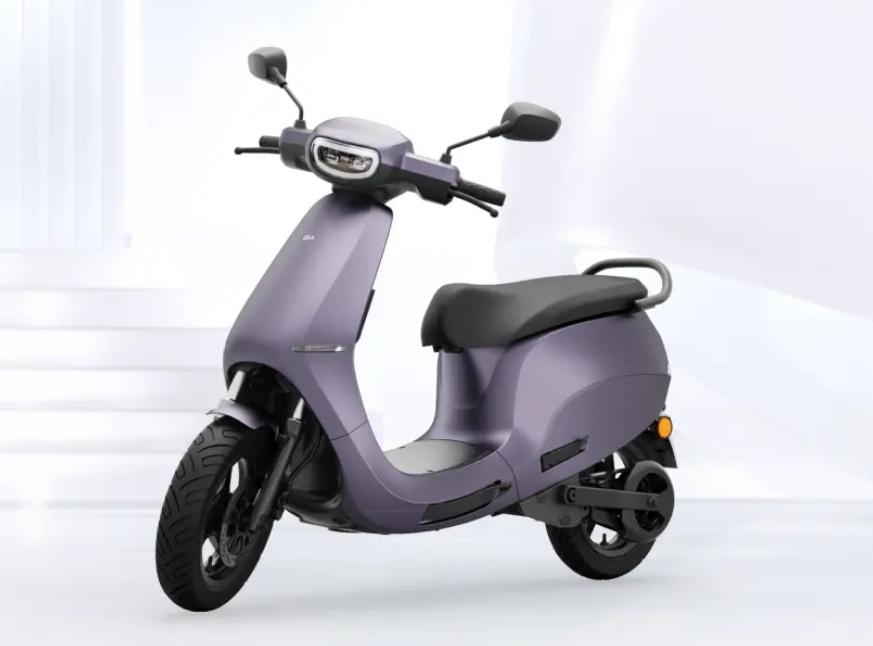
The equity market often baffles investors, and Ola Electric's recent rally is a prime example. On the surface, Ola's Q1 FY26 results look nothing short of a disaster: revenue is down 50% YoY, losses have increased 30%, and unit sales are also down by half. Naturally, most investors would expect the stock to tank. But defying all logic, Ola Electric’s stock price surged by 17% in a single day following the results.
So, what really happened? Is Ola Electric making a comeback or was this just a temporary bounce? Here's what a deep dive into the company’s numbers, conference calls, and disclosures revealed.
The Revenue Illusion: A Closer Look
Year-on-year, Ola's revenue dropped by 50%. However, quarter-on-quarter, revenue increased from ₹610 crore to ₹828 crore — a 36% jump. At first glance, this seems like a strong recovery. But dig deeper, and the actual scooter unit sales have declined from 72,765 units in Q4 FY25 (Jan-Mar) to 58,398 units in Q1 FY26 (Apr-Jun), reflecting a near 20% fall.
So how did revenue grow despite lower unit sales?
The answer lies in the product mix. Around 80% of the scooters sold in the latest quarter were of the newer Gen-3 models, which are 20-25% more expensive than the older versions. This shift to premium-priced models led to higher revenue despite selling fewer scooters.
Also, earlier misreporting of sales data played a part. For instance, Ola claimed 25,000 scooters sold in February, but the VAHAN portal reflected only 8,600 units. In its recent filings, Ola admitted that the 25,000 figure was based on bookings, not actual deliveries. Once corrected, it turns out that unit sales from Q4 and Q1 are actually quite close — only a 4-5% rise.
Cost Cutting and Operating Loss Reduction
While revenues showed some artificial growth, Ola did manage a significant improvement in controlling expenses. Total expenses fell by 25% quarter-on-quarter. Here's how:
Employee expenses dropped from ₹99 crore to ₹89 crore, thanks to layoffs earlier this year (1,000 employees in March and 500 more later).
Material costs increased from ₹350 crore to ₹441 crore, indicating higher input prices for premium scooters.
The real surprise came under “Other Expenses”, which fell from ₹680 crore to ₹362 crore — a 47% decline.
What’s behind this massive cut in "Other Expenses"? The company didn’t provide a clear breakdown in its filings. However, during its investor call, Ola mentioned the launch of “Project Lakshya” — a cost-cutting initiative aimed at achieving profitability.
The reduction in "Other Expenses" is also partly due to lower warranty claims. Ola’s Gen-1 and Gen-2 models were known for faults — including fire risks — and had higher repair/warranty costs. Most of these models were under a 3-year or 40,000 km warranty. Now, Ola revealed that about 70% of these old models have exited the warranty period. With fewer claims expected ahead, the cost burden has reduced substantially.
Losses Shrinking But Still Heavy
Ola reduced its net loss from around ₹800 crore in Q4 to ₹428 crore in Q1. This is a significant drop but still a long way from profitability. Also, the company’s operating cash flow remains negative at ₹143 crore.
Fundraising Plans and Unused IPO Proceeds
In May 2025, Ola’s board approved raising ₹1,700 crore. However, the purpose of this fundraising is still unclear. It’s also worth noting that Ola had raised ₹5,200 crore through its IPO, out of which half remains unutilized — ₹2,500 crore is still sitting in fixed deposits.
One key area where they promised to invest — cell development for battery manufacturing — was supposed to get ₹1,200 crore from the IPO proceeds. According to disclosures, Ola hasn’t spent even ₹1 on this vertical yet.
CEO Bhavish Aggarwal’s Diversions
Interestingly, Bhavish Aggarwal has recently shifted some focus to a new venture — Krutrim AI Labs — an artificial intelligence startup. He reportedly plans to invest around ₹100 crore into this AI initiative within the next year. Critics argue that Aggarwal’s shifting priorities, from Ola Cabs to Ola Electric and now AI, indicate a lack of long-term commitment to any single venture.
Market Reaction: Why Did the Stock Rally?
So why did the stock shoot up 17% Yesterday?
It seems that expectations had sunk so low that even a “less bad” performance created surprise and hope. For over a year, Ola has been plagued with negative news — regulatory scrutiny, layoffs, quality concerns, falling market share. So when the company showed even a slight quarter-on-quarter improvement in losses and revenue (even if driven by pricing), it caught the market off guard.
Retail investors, many of whom are stuck with Ola shares bought at ₹100-120, saw this as a sign of turnaround. Ola’s market share, however, continues to shrink. It now ranks third in India’s electric two-wheeler segment, behind TVS and Bajaj, down from its earlier leadership.
Final Thoughts
The 17% rally in Ola Electric’s share price isn’t necessarily a reflection of strong business fundamentals. It's more about sentiment, short-term optimism, and low expectations. While the company has managed to reduce some costs and shift to higher-margin products, its operating performance is still weak. Negative cash flows, underutilized IPO funds, and distractions at the leadership level raise caution.
As always, retail investors should be careful not to get carried away by a single quarter or media hype. It’s important to track consistency in numbers, real deliveries, and clear strategic focus before turning bullish.
Let’s hope Ola can genuinely improve and reward its long-term investors. But for now, cautious optimism is the best stance.
Disclaimer: This blog is for informational purposes only and should not be considered financial advice. Please consult a financial advisor before making investment decisions.




